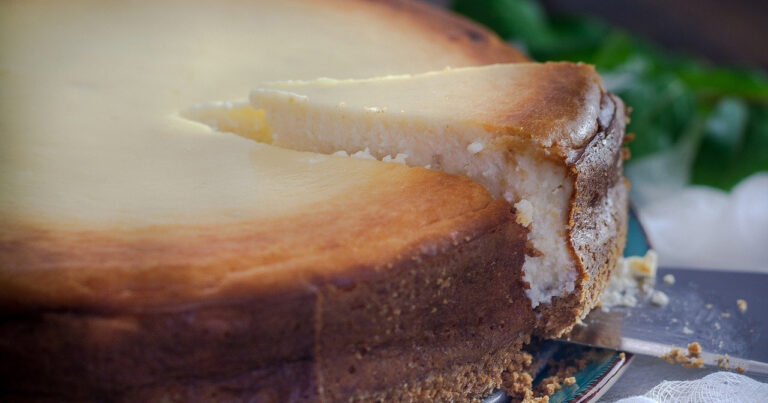Alexa Terry takes a closer look at the vocal fold layers and the role they play in singing.
Before we take a deep dive into the anatomy of the vocal fold layers, here’s a little brainteaser for you vocal nerds.
Question: What do the vocal folds have in common with onions, ogres and cheesecake?
Answer: They all have layers! (If you don’t get the ogres reference, here’s a video that explains it.)
If we were to plate up a cross-section of our true vocal folds and serve it with an afternoon cuppa (not a nice thought, but stick with us), we would see three layers. Now I would prefer a slice of cheesecake with my PG Tips but, in the name of voice science, let’s dig in and look at the three layers of the vocal folds.
1 Epithelium
This is the top layer of the vocal folds and has a texture often likened to the inside of the cheek. If you were to compare the vocal folds to lemon cheesecake, the epithelium would be the thin layer of sour curd or that creamy blow-torched meringue topping.
2 Lamina propria
This middle section (the mascarpone centre if you will) is designed for vibration and is mostly responsible for the ability of the vocal folds to oscillate thousands of times per second. It consists of three layers referred to as the superficial, intermediate and deep layers.
To continue the cheesecake analogy, this is where we might expect to find a squirting of lemon juice, a drizzle of jelly, and a scattering of zest among the creamy cheese to give it some flavour.
The superficial layer of the lamina propria is a jelly-like material made up of elastin and interstitial fluid, which surrounds the cells in the body. The lamina propria is considered the most important of the vocal fold layers.
Laryngologist Dr Reena Gupta says: “This irreplaceable material is the mechanism through which rapid vibration can be produced by the vocal folds. Loss of this material results in permanent hoarseness and permanent loss of vocal range.” (The OHNI Voice Book: Straight Talk with Dr Reena Gupta).
The intermediate layer is made up of elastin and the deep layer of mostly collagen, and together they form the vocal ligament. These two layers (and therefore the vocal ligament) begin to develop at approximately seven to eight years of age.
Elastin and collagen provide the voice with flexibility and the ability to hold tension, which is vital for pitch change. However, these materials decrease with age; the body stops producing elastin at puberty, which is why the more mature singer may experience vocal fold atrophy and feelings of vocal ‘stiffness’.
More on the vocal ligament
At the Vocology in Practice Virtual Conference 2020, vocal coach Chris Johnson gave a lecture on registration in which he stated how the vocal ligament “is highly flexible and can’t change its own tension. It relies on the CT (cricothyroid) muscle primarily to stretch the vocal folds out because you need to stretch the cords out to bring some tension to the ligament to allow it to vibrate.” (Chest Voice: Perceptually, Functionally and Practically – ViP 2020 lecture by Chris Johnson.)
Our physiology (the size of our neck and mouth, for example) plays a role in the creation of our ‘natural’ and individual sound; the genetic makeup of our lamina propria can determine our ability to create a strong, loud sound for longer.
The Naked Vocalist podcasting duo of Chris Johnson (him again!) and Steve Giles state that “if someone has been born with a thicker layer [of lamina propria], then they’re able to withstand more singing, stronger singing, louder singing… Can everyone sing as loud as each other? Can everyone generate certain sounds? The truth is: actually, no… but not many singers are training to the point where they’re held back by their genetics.” (The Naked Vocalist Podcast: Episode 36.)
3 Thyroarytenoid muscle
In our cheesecake recipe, this would be the crushed biscuit base. Often referred to as ‘the body’, the thyroarytenoid muscle (or TA) is the deepest layer of the vocal folds and is a muscle which is related to activating chest voice. It regulates its own tension and leads the vibration in the lowest part of the vocal range.
I don’t know about you, but after that, I rather fancy a slice of cake.
Side note: You may wonder why some scientists refer to the vocal folds as having five layers. They do this because they consider the three parts of the lamina propria – superficial, intermediate and deep – as layers in their own right. Hence five layers instead of three.
Further reading
– The OHNI Voice Book: Straight Talk with Dr Reena Gupta. Read our review here.
– BAST Training’s Vocal cords or vocal folds?
If you have any questions or comments, you can share them on the BAST Trainers Facebook group.




